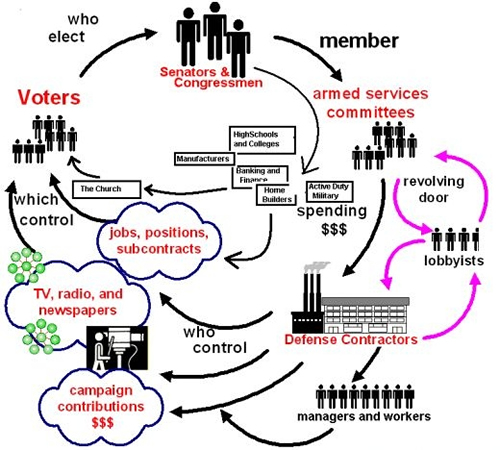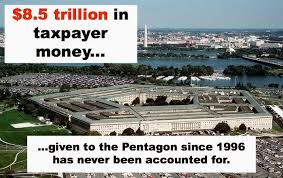|
JOHN RUBINO'SLATEST BOOK |
||||||||||||||||||||||||||||||||||||||||||||||||||||||||||||||||||||||||||||||||||||||||||||||||||||||||||||||||||||||||||||||||||||||||||||||||||||||||||||||||||||||||||||||||||||||||||||||||||||||||||||||||||||||||
"MELT-UP MONITOR " Meltup Monitor: FLOWS - The Currency Cartel Carry Cycle - 09 Dec 2013 Meltup Monitor: FLOWS - Liquidity, Credit & Debt - 04 Dec 2013 Meltup Monitor: Euro Pressure Going Critical - 28- Nov 2013 Meltup Monitor: A Regression-to-the-Exponential Mean Required - 25 Nov 2013
|
�
"DOW 20,000 " Lance Roberts Charles Hugh Smith John Rubino Bert Dohman & Ty Andros � |
�
HELD OVER
Currency Wars
Euro Experiment
Sultans of Swap
Extend & Pretend
Preserve & Protect
Innovation
Showings Below
��
"Currency Wars "
|
�
"SULTANS OF SWAP" archives open ACT II ACT III ALSO Sultans of Swap: Fearing the Gearing! Sultans of Swap: BP Potentially More Devistating than Lehman! |
�
"EURO EXPERIMENT"
archives open EURO EXPERIMENT :� ECB's LTRO Won't Stop Collateral Contagion!
EURO EXPERIMENT: |
�
"INNOVATION"
archives open |
�
"PRESERVE & PROTE CT"
archives open |
�

�
�
�
Mon. Mar. 3rd, 2014
 2014 THESIS: GLOBALIZATION TRAP
2014 THESIS: GLOBALIZATION TRAP
NOW AVAILABLE to Trial Subscribers
185 Pages
What Are Tipping Poinits?
Understanding Abstraction & Synthesis
Global-Macro in Images:� Understanding the Conclusions
�
| � | � | � | � | � |
| MARCH | ||||||
| S | M | T | W | T | F | S |
| � | � | � | � | � | � | 1 |
| 2 | 3 | 4 | 5 | 6 | 7 | 8 |
| 9 | 10 | 11 | 12 | 13 | 14 | 15 |
| 16 | 17 | 18 | 19 | 20 | 21 | 22 |
| 23 | 24 | 25 | 26 | 27 | 28 | 29 |
| 30 | 31 | � | � | � | � | � |
KEY TO TIPPING POINTS |
| 1 - Risk Reversal |
| 2 - Japan Debt Deflation Spiral |
| 3- Bond Bubble |
| 4- EU Banking Crisis |
| 5- Sovereign Debt Crisis |
| 6 - China Hard Landing |
| � |
| 7 - Chronic Unemployment |
| 8 - Geo-Political Event |
| 9 - Global Governance Failure |
| 10 - Chronic Global Fiscal ImBalances |
| 11 - Shrinking Revenue Growth Rate |
| 12 - Iran Nuclear Threat |
| 13 - Growing Social Unrest |
| 14 - US Banking Crisis II |
| 15 - Residential Real Estate - Phase II |
| 16 - Commercial Real Estate |
| 17 - Credit Contraction II |
| 18- State & Local Government |
| 19 - US Stock Market Valuations |
| � |
| 20 - Slowing Retail & Consumer Sales |
| 21 - China - Japan Regional Conflict |
| 22 - Public Sentiment & Confidence |
| 23 - US Reserve Currency |
| 24 - Central & Eastern Europe |
| 25 - Oil Price Pressures | 26 - Rising Inflation Pressures & Interest Pressures |
| 27 - Food Price Pressures |
| 28 - Global Output Gap |
| 29 - Corruption |
| 30 - Pension - Entitlement Crisis |
| � |
| 31 - Corporate Bankruptcies |
| 32- Finance & Insurance Balance Sheet Write-Offs |
| 33 - Resource Shortage |
| 34 - US Reserve Currency |
| 35- Government Backstop Insurance |
| 36 - US Dollar Weakness |
| 37 - Cyber Attack or Complexity Failure |
| 38 - Terrorist Event |
| 39 - Financial Crisis Programs Expiration |
| 40 - Natural Physical Disaster |
| 41 - Pandemic / Epidemic |
�
Reading the right books?
No Time?
We have analyzed & included
these in our latest research papers Macro videos!
![]()
OUR MACRO ANALYTIC
CO-HOSTS
John Rubino's Just Released Book
Charles Hugh Smith's Latest Books
Our Macro Watch Partner
Richard Duncan Latest Books
MACRO ANALYTIC
GUESTS
F William Engdahl
OTHERS OF NOTE
Book Review- Five Thumbs Up
for Steve Greenhut's
Plunder!
�
|

"BEST OF THE WEEK " |
Posting Date |
Labels & Tags | TIPPING POINT or 2013 THESIS THEME | |
HOTTEST TIPPING POINTS |
� | � | Theme Groupings |
|
| � | � | � | ||
We post throughout the day as we do our Investment Research for: LONGWave - UnderTheLens - Macro |
� | � | � | |
GEO-ECONOMIC RISK - Ukraine
�
|
03-03-14 | ECO- POLICAL UKRAINE |
8 - Geo-Political Event | |
GEO-ECONOMIC RISK - Ukraine Memo to Obama: This Was Their Red Line! 03-02-14 David Stockman, via his new blog Contra Corner via ZH
For the next 171 years Crimea was an integral part of Russia—a span that exceeds the 166 years that have elapsed�since California was annexed by a similar thrust of “Manifest Destiny” on this continent, thereby providing, incidentally, the United States Navy with its own warm-water port in San Diego. While no foreign forces subsequently invaded the California coasts, it was most definitely not Ukrainian and Polish riffles, artillery and blood which famously annihilated The Charge Of The Light Brigade at the Crimean city of Balaclava in 1854;�they were Russians defending the homeland. And the portrait of the Russian�”hero” hanging in Putin’s office is that�of Czar Nicholas I—whose brutal 30-year reign brought the Russian Empire to its historical zenith, and who was�revered in Russian hagiography as the defender of Crimea, even as he lost the 1850s war to the Ottomans and Europeans. Besides that, there�is no evidence that Putin does historical apologies, anyway. In fact,�its their Red Line. When the enfeebled Franklin Roosevelt made port in the Crimean city of Yalta in February 1945 he did know he was in Soviet Russia.�Maneuvering to cement his control of the Kremlin in the intrigue-ridden struggle for succession after Stalin’s death a few years later,�Nikita Khrushchev allegedly spent 15 minutes reviewing his “gift” of Crimea to his subalterns in Kiev in honor of the decision by their ancestors 300 years earlier to accept the inevitable and become a vassal of Russia. Self-evidently, during the long decades of the Cold War, the West did nothing to liberate the “captive nation” of the Ukraine—with or without the�Crimean appendage bestowed upon it in 1954. Nor did it draw any red lines in the mid-1990?s when a financially desperate Ukraine rented back Sevastopol and the strategic redoubts of the Crimea to an equally pauperized Russia. In short, in the era before we got our Pacific port in 1848 and in the 166-year interval since then, the security and safety of the American people�have depended not one wit on the�status of the Russian-speaking Crimea. Should the local population now choose fealty to the Grand Thief in Moscow over the ruffians and rabble who have seized Kiev, what’s to matter!� Worse still, how long can America survive the screeching sanctimony and mindless meddling�of Susan Rice and Samantha Power? Mr. President, send them back to geography class;�don’t draw any�new Red Lines. This one has been morphing for centuries among the�quarreling tribes, peoples, potentates, Patriarchs�and pretenders of a small region that is none of our damn business. |
03-03-14 | ECO- POLICAL UKRAINE |
8 - Geo-Political Event | |
GEO-ECONOMIC RISK - Ukraine Ukraine Crisis: Crimea in the Crosshairs 03-01-14 Geo-Political Monitor What is unfolding between Ukraine and Russia on the Crimean Peninsula? The answer is ostensibly simple: Russia is defending its interests at the behest of the mostly ethnic Russian population in Crimea. And while there are reports of an imminent Russian invasion, the fact is that Russia already has troops on the ground in Crimea, given that they have leased a major military base in Sevastopol. How will the situation evolve? |
03-03-14 | ECO- POLICAL UKRAINE |
8 - Geo-Political Event | |
GEO-ECONOMIC RISK - Ukraine "Welcome To The Era Of Failed States" 03-03-14 James H. Kunstler of Kunstler.com, via ZH So, now we are threatening to start World War Three because Russia is trying to control the chaos in a failed state on its border — a state that our own government spooks provoked into failure? The last time I checked, there was a list of countries that the USA had sent troops, armed ships, and aircraft into recently, and for reasons similar to Russia’s in Crimea: the former Yugoslavia, Somalia, Afghanistan, Iraq, Libya, none of them even anywhere close to American soil. I don’t remember Russia threatening confrontations with the USA over these adventures. The phones at the White House and the congressional offices ought to be ringing off the hook with angry US citizens objecting to the posturing of our elected officials. There ought to be crowds with bobbing placards in Farragut Square reminding the occupant of 1400 Pennsylvania Avenue how ridiculous this makes us look. The saber-rattlers at The New York Times were sounding like the promoters of a World Wrestling Federation stunt Monday morning when they said in a Page One story:
Are they out of their chicken-hawk minds over there? It sounds like a ploy out of the old Eric Berne playbook: Let’s You and Him Fight. What the USA and its European factotums ought to do is mind their own business and stop issuing idle threats. They set the scene for the Ukrainian melt-down by trying to tilt the government their way, financing a pro-Euroland revolt, only to see their sponsored proxy dissidents give way to a claque of armed neo-Nazis, whose first official act was to outlaw the use of the Russian language in a country with millions of long-established Russian-speakers. This is apart, of course, from the fact Ukraine had been until very recently a province of Russia’s former Soviet empire. Secretary of State John Kerry — a haircut in search of a brain — is winging to Kiev tomorrow to pretend that the USA has a direct interest in what happens there. Since US behavior is so patently hypocritical, it raises the pretty basic question: what are our motives? I don’t think they amount to anything more than international grandstanding — based on the delusion that we have the power and the right to control everything on the planet, which is based, in turn, on our current mood of extreme insecurity as our own ongoing spate of bad choices sets the table for a banquet of consequences. America can’t even manage its own affairs. We ignore our own gathering energy crisis, telling ourselves the fairy tale that shale oil will allow us to keep driving to WalMart forever. We paper over all of our financial degeneracy and wink at financial criminals. Our infrastructure is falling apart. We’re constructing an edifice of surveillance and social control that would make the late Dr. Joseph Goebbels turn green in his grave with envy while we squander our dwindling political capital on stupid gender confusion battles. The Russians, on the other hand, have every right to protect their interests along their own border, to protect the persons and property of Russian-speaking Ukrainians who, not long ago, were citizens of a greater Russia, to discourage neo-Nazi activity in their back-yard, and most of all to try to stabilize a region that has little history and experience with independence. They also have to contend with the bankruptcy of Ukraine, which may be the principal cause of its current crack-up. Ukraine is deep in hock to Russia, but also to a network of Western banks, and it remains to be seen whether the failure of these linked obligations will lead to contagion throughout the global financial system. It only takes one additional falling snowflake to push a snow-field into criticality. Welcome to the era of failed states. We’ve already seen plenty of action around the world and we’re going to see more as resource and capital scarcities drive down standards of living and lower the trust horizon. The world is not going in the direction that Tom Friedman and the globalists thought. Anything organized at the giant scale is now in trouble, nation-states in particular.� The USA is not immune to this trend, whatever we imagine about ourselves for now.� |
03-03-14 | ECO- POLICAL UKRAINE |
8 - Geo-Political Event | |
| THESIS & THEMES | � | � | � | |
CRONY CPAITALISM - Theft on Grand Scale
Missing Military-Industrial-Complex Money 02-19-14 batr.org � C O R P O R A T O C R A C Y
� |
03-03-14 | THEME | � CRONY CAPITALISM
� |
MOST CRITICAL TIPPING POINT ARTICLES THIS WEEK - March 2nd - March 9th | � | � | � |
| RISK REVERSAL | � | � | 1 | |
| JAPAN - DEBT DEFLATION | � | � | 2 | |
| BOND BUBBLE | � | � | 3 | |
EU BANKING CRISIS |
� | � | 4 |
|
| SOVEREIGN DEBT CRISIS [Euope Crisis Tracker] | � | � | 5 | |
| CHINA BUBBLE | � | � | 6 | |
| TO TOP | ||||
| � | ||||
| MACRO News Items of Importance - This Week | ||||
GLOBAL MACRO REPORTS & ANALYSIS |
� | � | � | |
US ECONOMIC REPORTS & ANALYSIS |
� | � | � | |
| CENTRAL BANKING MONETARY POLICIES, ACTIONS & ACTIVITIES | � | � | � | |
| � | � | � | ||
| Market | ||||
| TECHNICALS & MARKET | � |
� | � | |
| COMMODITY CORNER - HARD ASSETS | � | PORTFOLIO | � | |
| COMMODITY CORNER - AGRI-COMPLEX | � | PORTFOLIO | � | |
| SECURITY-SURVEILANCE COMPLEX | � | PORTFOLIO | � | |
| � | � | � | ||
| THESIS | ||||
| 2014 - GLOBALIZATION TRAP | 2014 |  |
||
|
2013 2014 |
||||
2011 2012 2013 2014 |
||||
| � | � | |||
| THEMES | ||||
| FLOWS -FRIDAY FLOWS | � | THEME | ||
| SHADOW BANKING -LIQUIDITY / CREDIT ENGINE | � | THEME | � | |
| CRACKUP BOOM - ASSET BUBBLE | � | THEME | � | |
| ECHO BOOM - PERIPHERAL PROBLEM | � | THEME | � | |
| PRODUCTIVITY PARADOX -NATURE OF WORK | � | THEME | � | |
| STANDARD OF LIVING -EMPLOYMENT CRISIS | � | THEME | � | |
| CORPORATOCRACY -CRONY CAPITALSIM | � | THEME |  |
|
CORRUPTION & MALFEASANCE -MORAL DECAY - DESPERATION, SHORTAGES. |
� | THEME |  |
|
| SOCIAL UNREST -INEQUALITY & A BROKEN SOCIAL CONTRACT | � | THEME | � | |
| SECURITY-SURVEILLANCE COMPLEX -STATISM | � | THEME | � | |
| GLOBAL FINANCIAL IMBALANCE - FRAGILITY, COMPLEXITY & INSTABILITY | � | THEME | � | |
| CENTRAL PLANINNG -SHIFTING ECONOMIC POWER | � | THEME | � | |
| CATALYSTS -FEAR & GREED | � | THEME | � | |
| GENERAL INTEREST | � |
� | � | |
| TO TOP | ||||
Tipping Points Life Cycle - Explained
Click on image to enlarge
 ���
���
TO TOP
�
�
�
�
�� TO TOP
�
�
�

































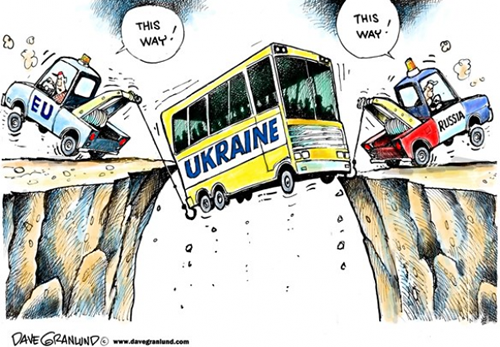

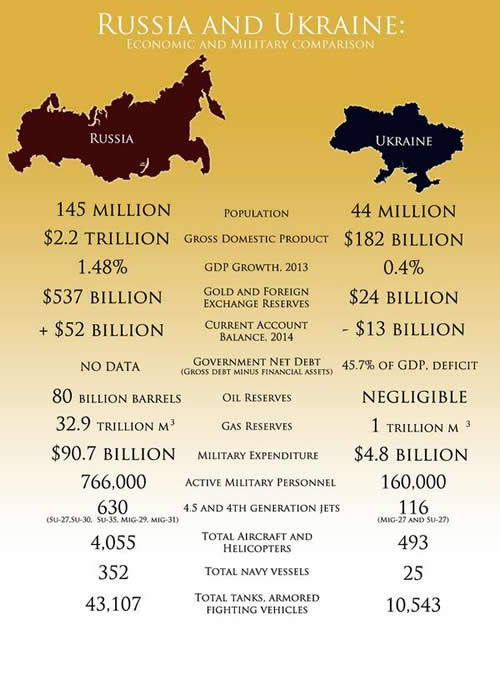
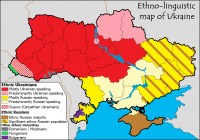 In 1783 the Crimea was annexed by Catherine the Great, thereby satisfying�the longstanding quest of the Russian Czars for a warm-water port. In fact, over the ages Sevastopol emerged as a great naval base at the strategic tip of the Crimean peninsula, where it became home to the mighty Black Sea�Fleet of the Czars and then the commissars.
In 1783 the Crimea was annexed by Catherine the Great, thereby satisfying�the longstanding quest of the Russian Czars for a warm-water port. In fact, over the ages Sevastopol emerged as a great naval base at the strategic tip of the Crimean peninsula, where it became home to the mighty Black Sea�Fleet of the Czars and then the commissars.